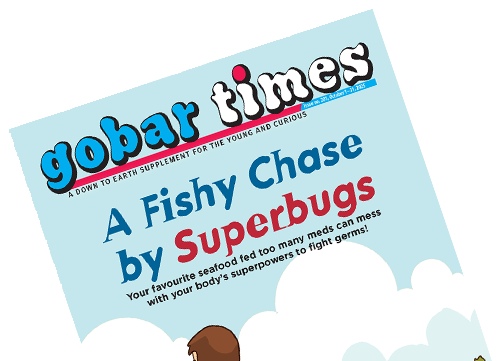
Monsoons are here and as the rain pours tip tap, wouldn't it be nice to read a book or watch a favourite show while munching something fresh and tasty? Here is a corn salad recipe that is quick to make and is full of nutrients. Corn is a rich source of calories and is a staple among many populations. The calorie content of corn is 342 per 100 grams, which is among the highest in cereals. Calories are important for healthy metabolism. Corn is a rich source of vitamin A, vitamin B, vitamin E, and several minerals. Its high fibre content helps in the prevention of digestive ailments such as constipation.

Waste does not exist in nature. It is only humans who create it. In a world of constant upgrades and the latest models, where do our old possessions go?

It is said that when the British Governer General Warren Hastings brought the water hyacinth to India in the 18th century, thinking it was a flower, he couldn't have imagined that was actually a deadly weed.

Ramdana are the seeds of chaulai or amaranth. These seeds are a good source of calcium, protein, and amino acids and are rich in iron, magnesium, and vitamin A, B, and C. Ramdana is an integral part of Hindu fasting diet. Here, is a summer recipe which is both nutritious and healthy.

In the guise of development, what allows us to be callous with earth's resources? A study conducted by Indian Institute of Soil Science shows that majority of the soil in India is deficient in secondary nutrients, such as sulphur, and micronutrients, such as zinc, boron, iron, copper and manganese. The question then is how nutritious can our food be if it is grown on malnourished land? Many other villages are suffering, like Jaduguda and Kolaghat, because the polluter does not take the responsibility of the waste, burdening locals with unseen consequences...

Why is the Indian monsoon so slippery? The monsoon of the Indian subcontinent is also shaped by the heating of the Tibetan plateau, the shape of continents and mountains, Eurasian snow cover, temperature difference between eastern and western flanks of the Indian ocean, and, arguably the most important, El Niño (“little boy” in Spanish as this event occurs around Christmas), a weather event triggered by a greater heating of the eastern Pacific near Ecuador than its western counterpart. A strong El Niño, more often than not, implies a weak monsoon. In the last 100 years, 19 out of 43 deficient monsoon years were …

